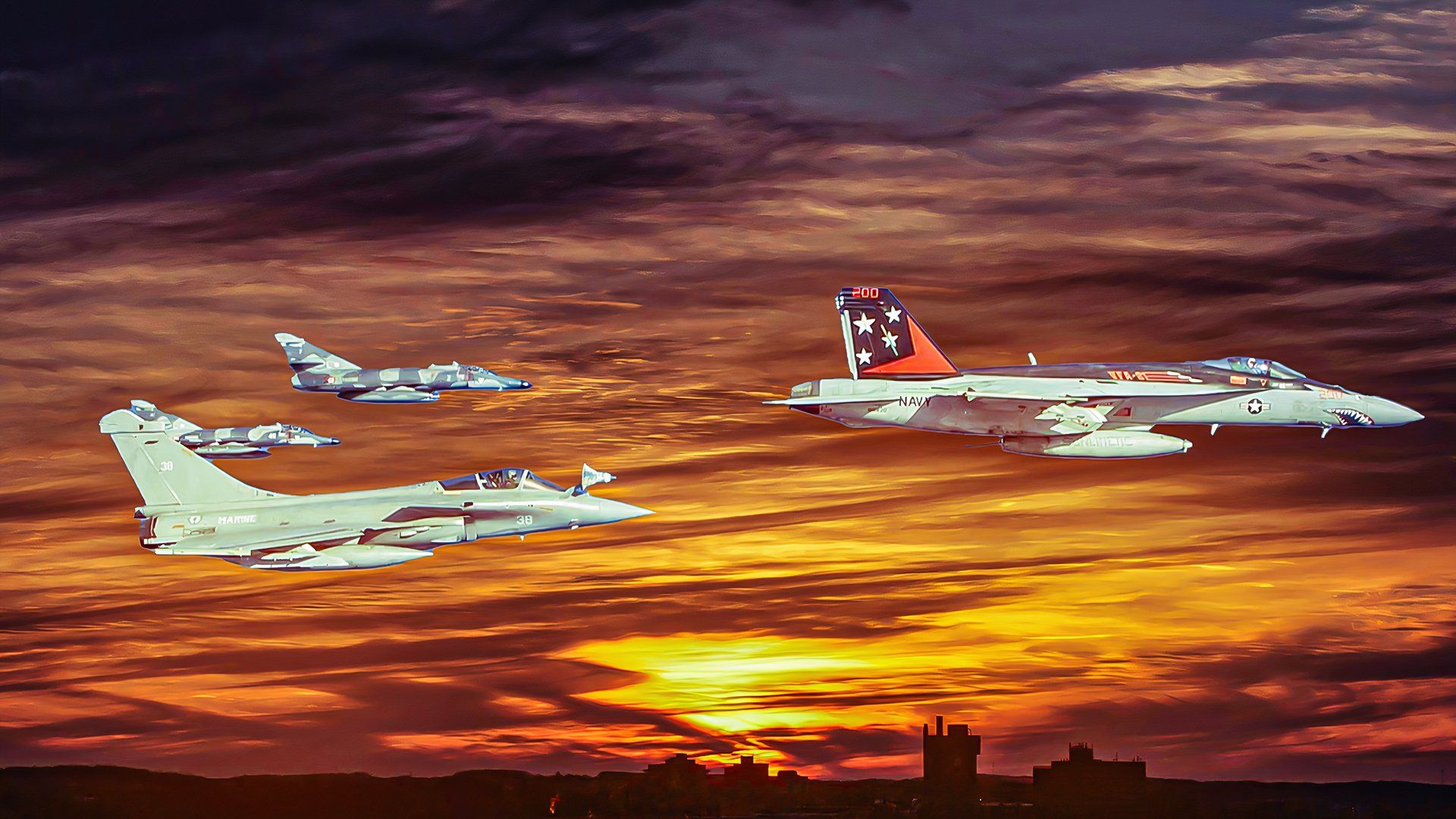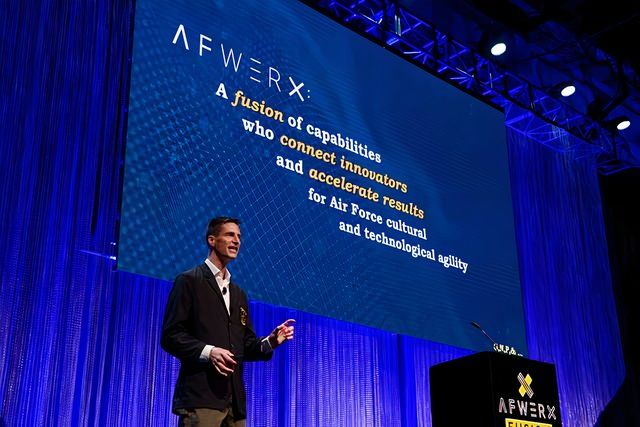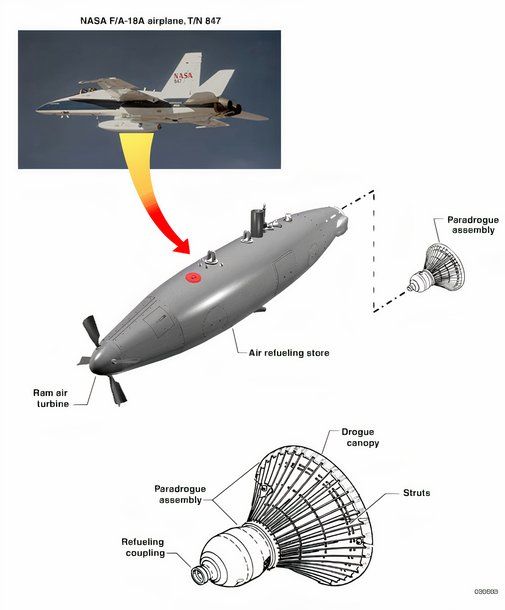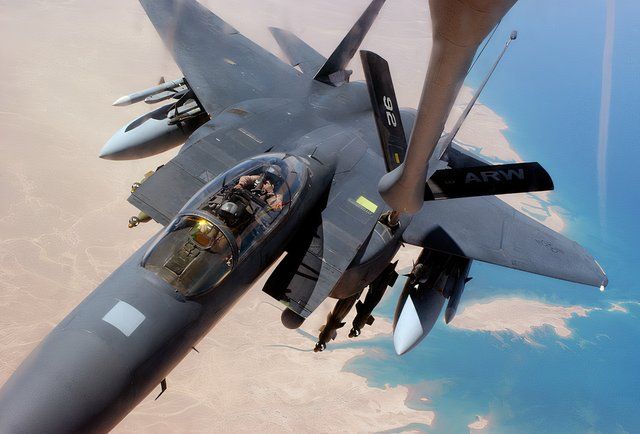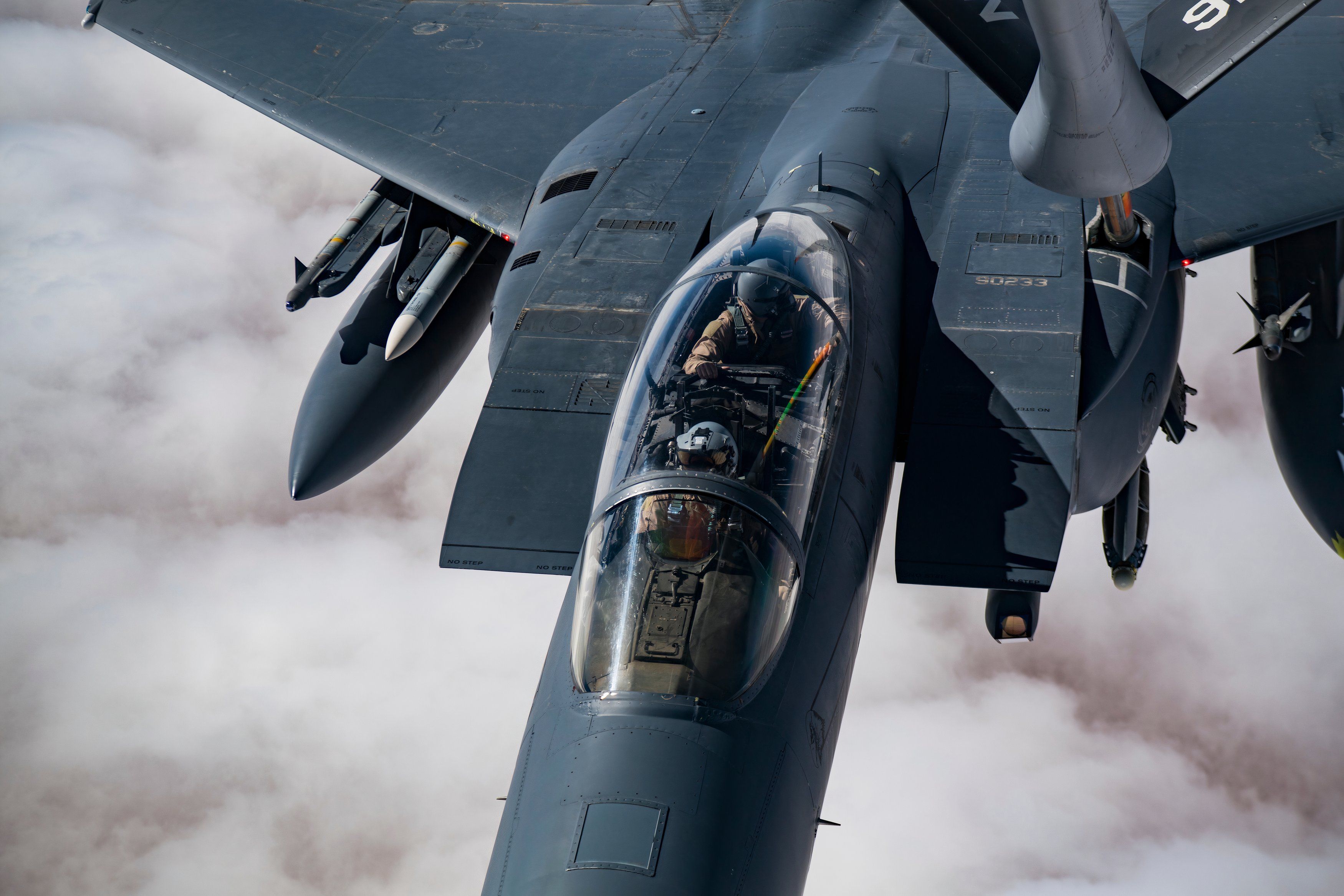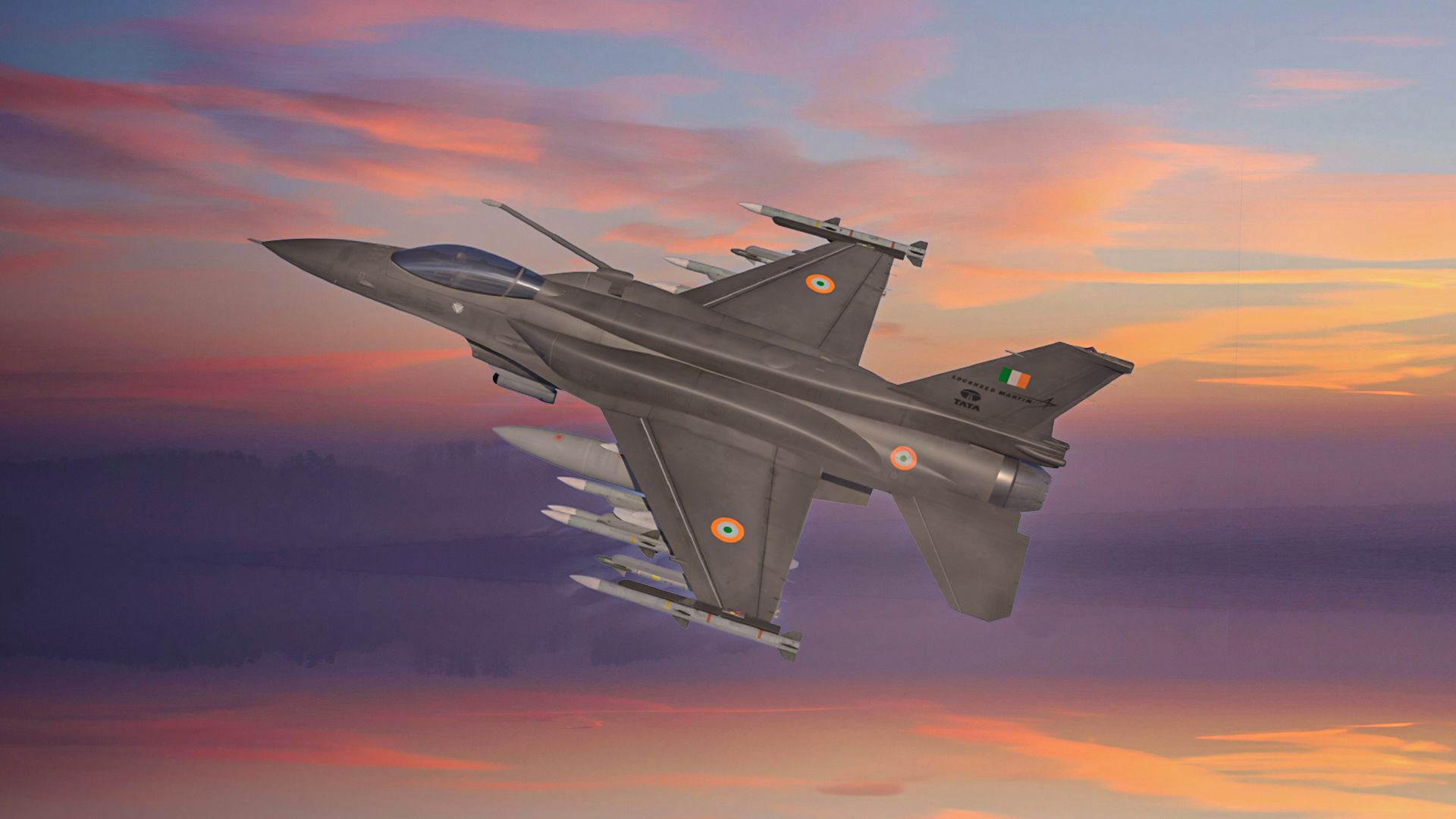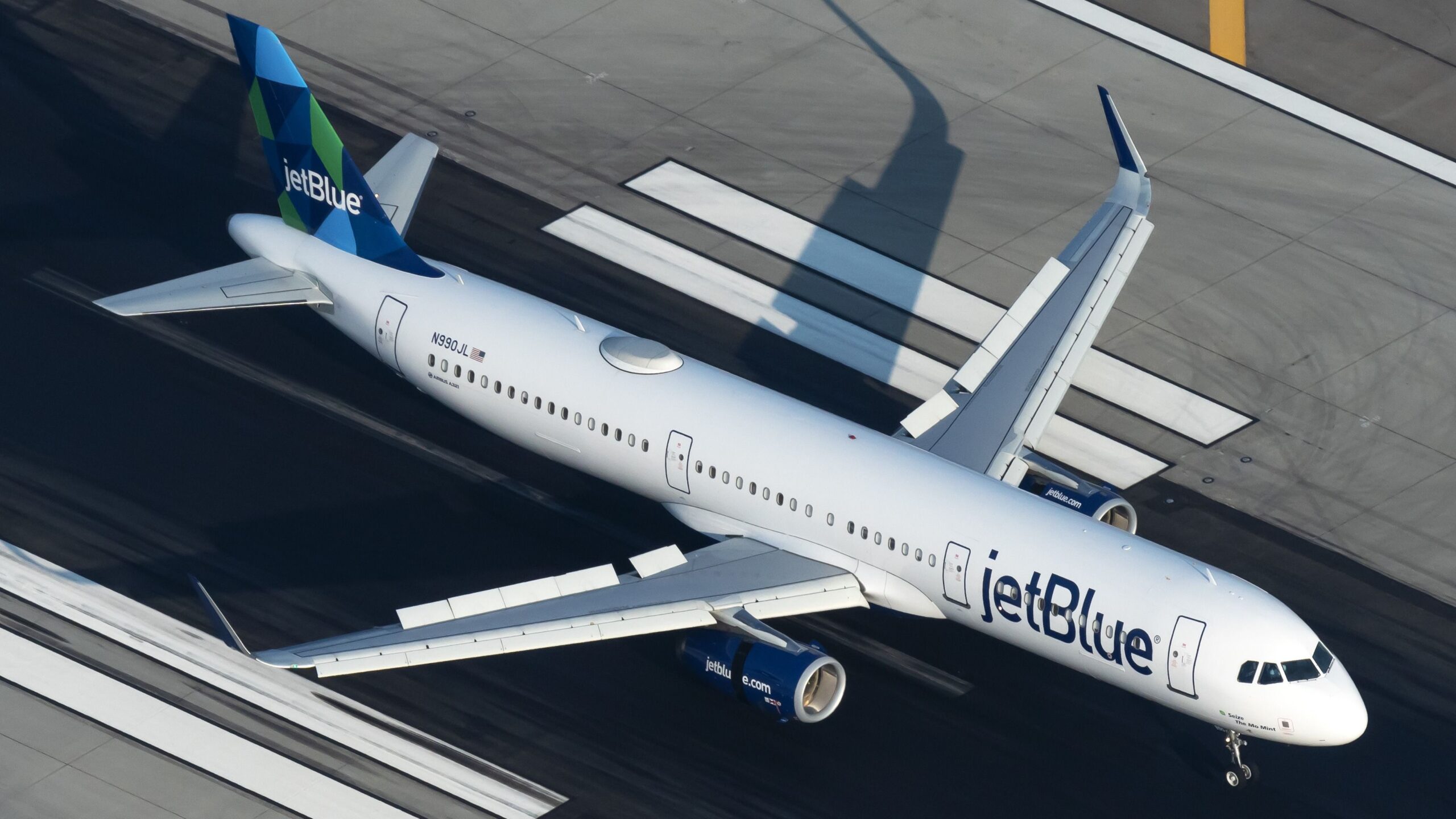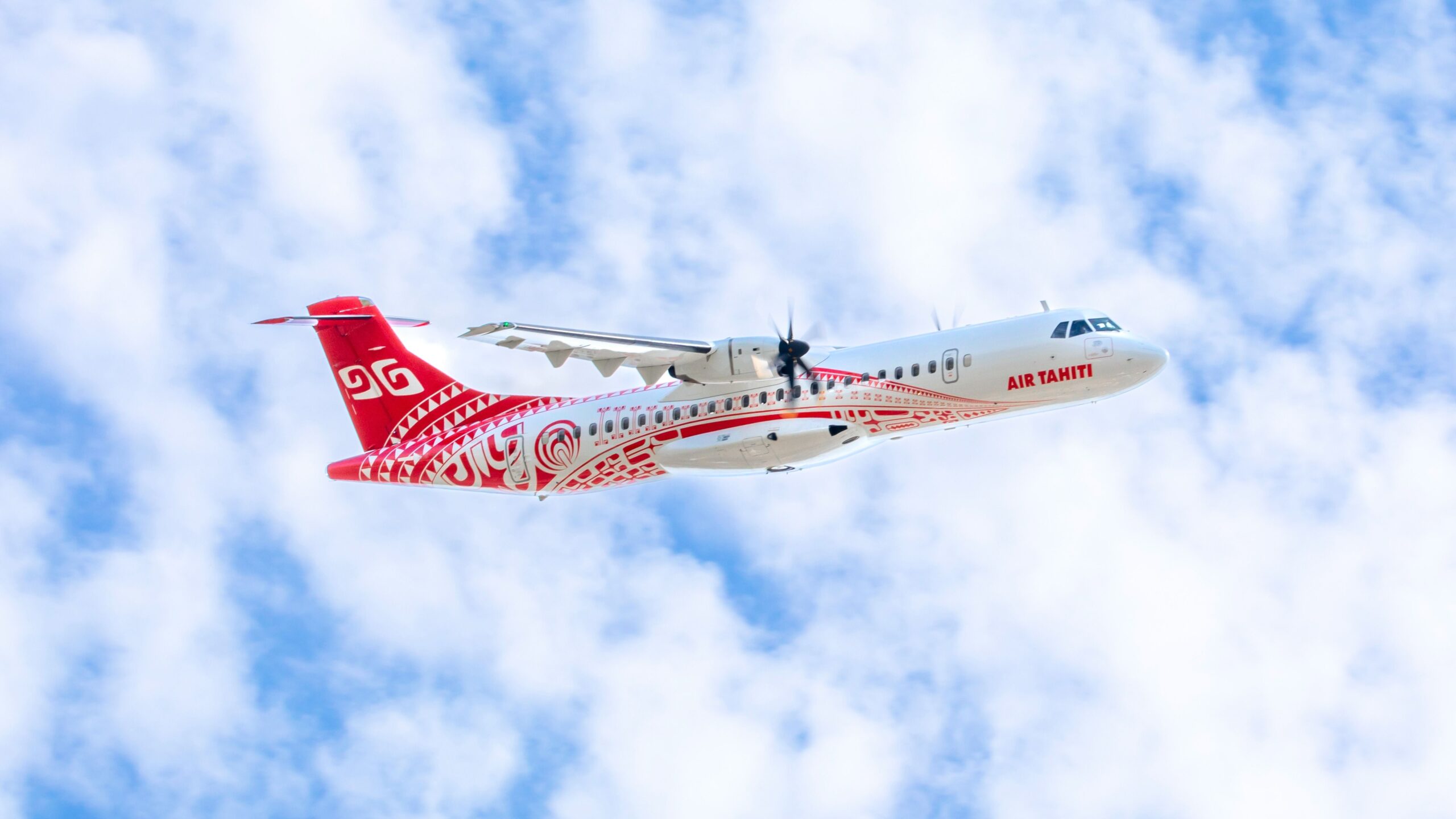Aerial refueling refers to transferring aviation fuel from one tanker aircraft to the receiver aircraft while both are in flight. This allows the receiving aircraft to extend its range and stay in the air for longer periods without needing to land. This is typically done using a tanker aircraft equipped with a flexible hose method or a flying boom.
The AFWERX, a platform that connects the Air Force with innovators, aims to design a compact, modular, and affordable fuel transfer mechanism for a wider range of platforms, while expanding the list of potential aerial refueling subsystem vendors and solution providers.
Photo: Bridget Bennett | DVIDS
The modular SHARK system enables safe in-flight air refueling of both crewed and uncrewed military aircraft, providing critical capability to the tactical fleet as the Next Generation Air-refueling System NGAS matures, especially as Collaborative Combat Aircraft and autonomous aircraft become increasingly essential.
Photo: Gunnery Sgt. T. T. Parish | US Navy
Aerial refueling has various advantages, including allowing military aircraft to conduct long-range operations without landing, particularly in battle zones or locations with inadequate infrastructure. It also increases the flexibility of military operations, allowing for faster reactions to changing ground conditions.
Typical aerial refueling mechanism
Probe-and-drogue aerial refueling
The probe-and-drogue refueling method uses a flexible hose from a tanker aircraft with a drogue attached to it. The drogue stabilizes the hose and aids in inserting the receiver aircraft probe, a retractable arm placed on the aircraft’s nose or fuselage.
The valve at the end of the probe mates with the drogue’s internal receptacle, allowing fuel to pass from the tanker to the receiver. NATO
standard probe systems use shear rivets to attach the refueling valve to the probe, preventing structural damage in case of a large load.
The aerial refueling system, developed by Cobham Aviation
, was initially used by the Royal Air Force
. The system was later used in a modified Lancaster tanker and a modified Gloster Meteor jet fighter fitted with a nose-mounted probe. In 1949, a test pilot flew a 3,600 mi distance, setting a new jet endurance record.
Flying Boom air-to-air refueling
A boom operator aboard the tanker aircraft stretches and inserts the flying boom—a rigid, telescoping tube with moveable flight control surfaces—into a receptacle on the receiving aircraft. This system allows one aircraft to be refueled at a time.
The flying boom is a gimbaled attachment on the rear of a tanker aircraft that moves with the receiver aircraft during fuel transfer. It contains a rigid pipe for fuel transfer and a flexible ball joint nozzle that mates with the receiver’s receptacle. The boom is small movable airfoils in a V-tail configuration, which create aerodynamic forces. A control stick and telescopes are used to contact the receiver’s receptacle.
Photo: SSGT Aaron D. Allmon II | The US National Archives
The US Air Force mostly uses the boom approach for aircraft refueling, as it reduces coupling time and fuel transfer rate, allowing tankers to refuel more aircraft in less time than using a probe-and-drogue technique. It is a highly sensitive process to ensure an uninterrupted fuel flow, preventing damage or fuel spills while minimizing disruptions.
The air-to-air refueling of the SHARK
The contractor awarded entities
The Air Force Research Laboratory (AFRL), a subcommand of the Air Force Materiel Command, assigned Legionnaire International a $3.19 million contract to develop a Small Hybrid Aerial Refueling Kit (SHARK). Then Dynetics, an applied science company, obtained a separate SHARK contract worth $2.67 million from AFRL. It is uncertain if Legionnaire International and Dynetics are now collaborating or operating independently.
“The SHARK is a perfect example of how to reimagine a standard practice, and we are thrilled to be involved in this project with our partners,” J.R. “Flash” Starch, CEO & Test Pilot, Legionnaire International
Legionnaire International, a veteran-owned business in Texas, US, focuses on providing new technologies for warfighters. With a culture of excellence and agility, they operate
A-4 Skyhawks
for flight tests and have been awarded a contract from the Air Force Research Laboratory for next-generation Carriage and Release Technologies.
Dynetics is an American applied science and information technology company. It is a subsidiary of Leidos, an innovative company that tackles the most challenging health and national security issues.
The shark is a small fuel transfer mechanism that fits into a modular to meet the specific needs of different aircraft types, a hybrid for flexibility in refueling mechanism, and a podded outer line. The initial scoping for design considerations should focus on the F-15’s refueling mechanism.
The high platform is agnostically podded, and the internally stable system is designed to fit within a 36″ diameter and 230″ length Outer Mold Line OML. It is intended to fit a 330-gallon external fuel tank. The system requires minimal power, hydraulics, and fuel from the host aircraft. It is compatible with fielded refueling technology and can leverage mature and integrated technology.
The new mechanism uses recent technological advancements in automated aerial refueling to modernize fuel transfer systems for smaller, more flexible refueling capabilities. The prospect mechanism would be a compact and lightweight aerial refueling system capable of boom/receptacle refueling, with a desire for dual boom, probe, and drogue refueling.
The Air Force has been exploring podded aerial refueling capabilities since 2019, with a design for a small pod-mounted tactical air refueling boom in its proposed budget for 2024. The current status of this project and its relation to SHARK is unknown. The future SHARK pod might not feature a boom as traditionally understood.
The upcoming benefits of the innovative system
The Podded Boom System uses drones with a buddy store and could potentially transport fuel from tankers outside enemy range to tactical edge receivers. The US and its allies are expected to benefit from an advanced refueling system due to growing air defense threats worldwide. This will increase demand for better fuel delivery to stealthy platforms in high-risk areas and ensure the safety of aerial refueling assets.
Photo: Sgt. Clayton Cupit | DVIDS
The initial design scoping should focus on the preliminary use of the F-15 Jets. A two-seat combat jet like the F-15E Strike Eagle or
F-15EX Eagle II
could better manage workload due to the size and large internal fuel capacity of F-15-series jets. A primary initiative of the SHARK was a prototype called Vampire, which collaborated with the US Air Force Research Laboratory and included a controllable end effector for refueling NATO aircraft.
The aerospace giants’ initiatives
The US bridge tanker US program has ended, indicating Boeing’s support for the KC-46 Pegasus and a setback for Lockheed Martin’s LMXT alternative. Lockheed Martin
plans a competition for the KC-Y program to bridge the gap between the KC-46 and a next-generation refueling system. Boeing conducted autonomous boom aerial refueling tests.
![]() Boeing
Boeing
revealed its first pre-production example of the MQ-25 Stingray tanker drone last year, which the company is developing for the US Navy. The MQ-25 demonstrator, also known as the T1, has been the public face of the Stingray program. The drone is under fatigue testing, which involves stress tests of airframes to reveal how microscopic cracks form in the fuselage.
Airbus
has successfully collaborated with the Republic of Singapore Air Force and received certification from a Spanish agency for its fully automatic air-to-air refueling system. The system, designed to reduce boom operator workload, uses software to fly the boom automatically, maintain alignment, extend and retract the telescopic beam, and initiate and terminate the refueling process while the boom operator monitors.
The Air Force is seeking industry feedback on innovative technologies for its planned tanker, the KC-Z, with an anticipated initial operational capability of 2040. The Next Generation Air-refuelling System (NGAS) project, also known as KC-Z. The Hudson Institute’s Tim Walton suggests that KC-Z research and development could continue until FY 2031, allowing the Air Force to achieve initial
operational capability in the 2030s
.

